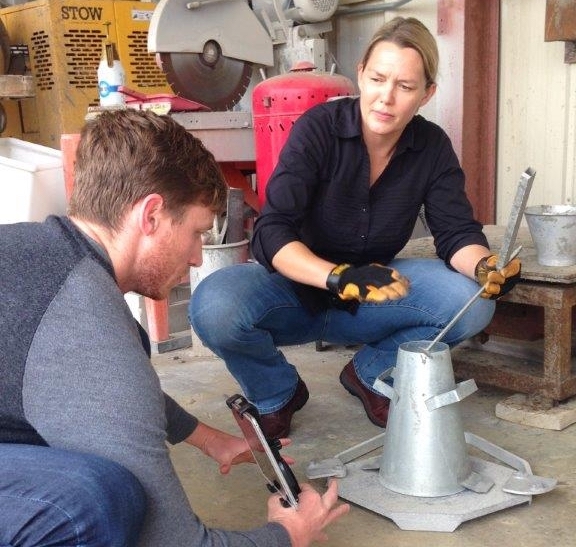
A Pipeline into STEM

For the past four summers, UC Santa Barbara and the Navy base at Port Hueneme have partnered to provide a workforce learning opportunity to science and engineering undergraduates at the university as well as those at local community colleges. The program, Problem-based Initiatives for Powerful Engagement and Learning In Naval Engineering and Science (PIPELINES), offers the students an eight-week immersive experience at the Navy base.
And the key phrase is “problem based.” Each summer, PIPELINES teams of two community college students and one undergraduate at the university pair up with a scientist or engineer at the Navy base and a UC Santa Barbara graduate student who serve as mentors. The undergrads receive a challenge from their Navy mentors and work with their teams, Navy staff and their grad student partners to devise a solution.
For instance, in the program’s first year the base needed a tether system that would connect a seafloor sensor to an antenna mounted on a surface buoy. The Navy wanted to take advantage of the bandwidth of fiberoptic cables, but the material fairs poorly under tension, which it could experience in high seas. The team devised a spring system that could absorb the tension put on the cable with minimal losses in transmission.
“The students were asked to come up with an innovative idea to have this link be functional for different weather conditions,” said the university’s Community College Programs Coordinator Maria Napoli, who founded and oversees the initiative. “This project resulted in a patent application.”
PIPELINES was recently recognized by Excelencia in Education for its outstanding service to underrepresented students, particularly those in the Latino community. Excelencia in Education is a research-based organization that promotes programs that support Latino students according to data and best practices.
“I’m very honored, of course, for the recognition of all the work that has gone into creating this program,” Napoli said. “Not only my work, but the work of all our collaborators. It always takes a team to make a program of this scale happen.”
The idea for the program came about in November 2014, when Napoli met Navy Technical Director Kail Macias during a meeting sponsored by the American Society of Military Engineers. During subsequent visits at the Navy base with engineering professor Brad Paden, the group discovered a common interest in creating opportunities for young students to experience the kind of work involved in science, technology, engineering and math (STEM) careers at the base.
“My idea was to create this experience that would connect the dots for the students,” said Napoli, “and basically show them how the things they are learning in class are applied when you work as an engineer.”
Macias was excited to bring young talent to the base. He wanted to attract local students who might consider STEM careers in the Navy, especially because they would be more likely than those from elsewhere in the country to apply for positions at the base after they graduated.
“At the community college level there is a lot of talent that is often overlooked for a number of reasons,” said Napoli. “The idea was to bring back this talent into the fold, and encourage them to stay in school and to complete degrees in science and engineering.”
PIPELINES’s founding group included Professors Judith Green and Diana Arya, from the Gevirtz Graduate School of Education, who studied the program design and learning experience with the ultimate goal of understanding how programs like PIPELINES support the development of student participants.
UC Santa Barbara and the Navy base are resubmitting the project for another round of funding from the Office of Naval Research. The first round covered only three years, but this summer the Naval Facilities Engineering Command’s Engineering and Expeditionary Warfare Center provided full funding for the program.
“They were so satisfied with the previous three iterations of the program — with the kind of students they got and the performance of the students at the base — that they decided to fund it this summer, because this would have been a gap year,” Napoli said.
If approved, the program would grow to include two additional naval commands, and expand from five UC Santa Barbara students per year to 14. What’s more, students from UC Santa Barbara would have the option to continue to work on a Navy project during the year as an independent study or capstone project. Napoli even plans to begin reaching out to local high schools to extend PIPELINES further.
PIPELINES shows underrepresented students career pathways into STEM professions, according to Napoli. “Through a difference of experiences, cultural differences and background, these students can bring a new perspective and creative energy to the field,” she said.



